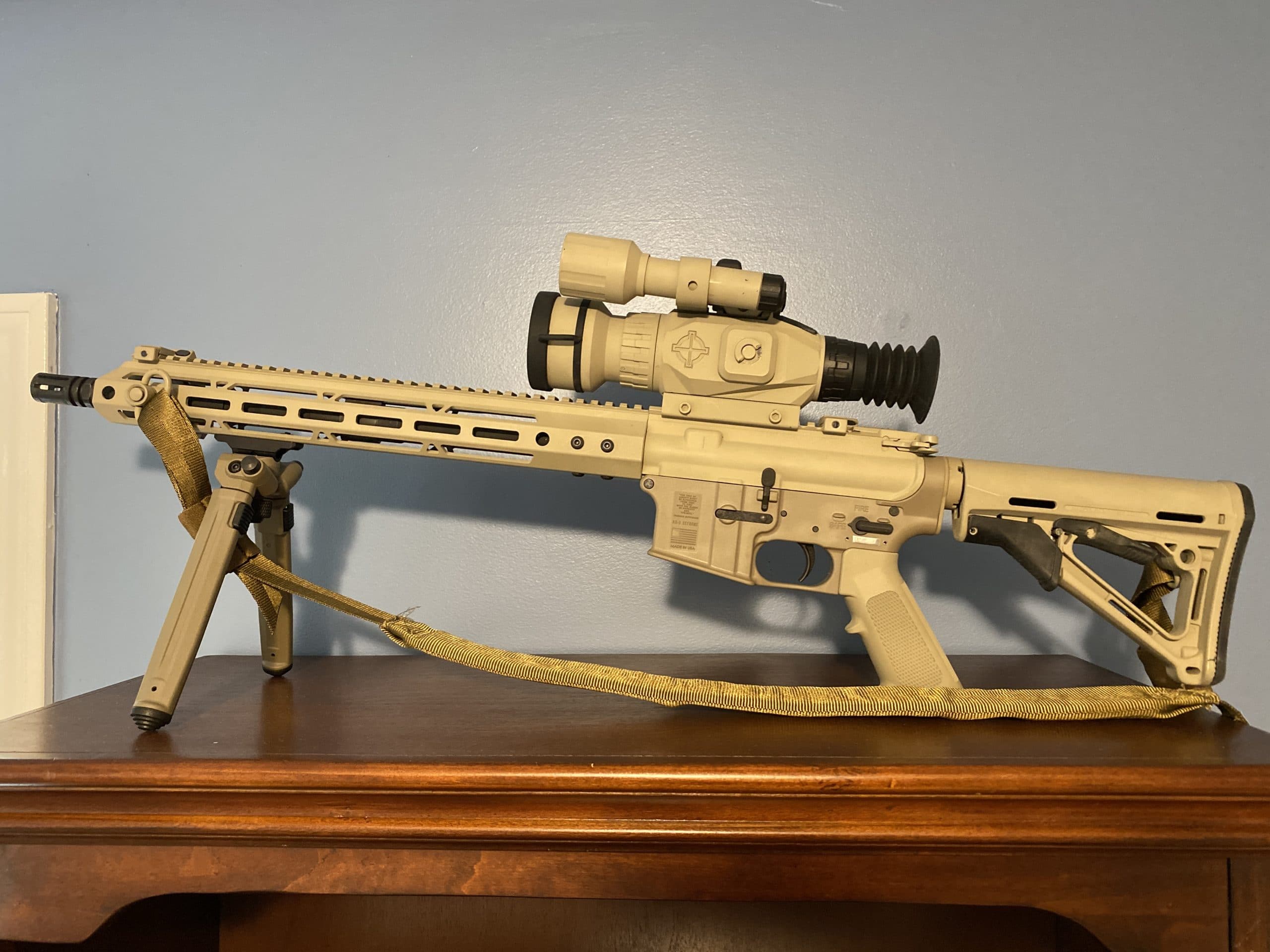
Categories:
Gun safety is of utmost importance when it comes to owning guns, especially within the confines of your own home. With an estimated 393 million guns in circulation in the United States alone, ensuring that these weapons are securely stored and handled responsibly is crucial to prevent accidents, injuries, or even fatalities. In this subtopic, we will explore various aspects of gun safety within the home setting and provide valuable information on how to keep yourself and your loved ones safe.
Home should be a place where everyone feels secure and protected. However, the presence of guns can introduce potential risks if not managed properly. Whether you are a seasoned gun owner or have recently acquired a gun for personal protection or recreational purposes, understanding and implementing effective gun safety practices is essential. This discussion will cover key areas such as safe storage methods for guns at home, responsible handling techniques, education on gun basics for all household members, and the importance of establishing open lines of communication about guns with children.
By adhering to these guidelines and adopting proactive measures towards gun safety in our homes, we can significantly reduce the risk of accidents or unauthorized access to guns. It is important to note that this subtopic aims to provide general guidance on gun safety practices within residential environments. However, laws and regulations regarding gun ownership may vary between jurisdictions; thus, it is crucial for individuals to familiarize themselves with local legislation specific to their area.
Responsible gun ownership is an essential aspect of ensuring the safety and well-being of individuals within a household. It encompasses not only the legal possession of guns but also the knowledge, skills, and attitudes necessary to handle them safely. By adhering to the principles of responsible gun ownership, individuals can significantly reduce the risk of accidents, unauthorized access by children or unauthorized individuals, and misuse of guns.
One fundamental aspect of responsible gun ownership is ensuring proper storage. Guns should be securely stored in a locked cabinet or safe when not in use. This helps prevent accidental discharge and keeps them out of reach from children or other unauthorized persons who may cause harm unintentionally or intentionally. Additionally, ammunition should be stored separately from guns for added safety.
Another crucial element is education and training. Responsible gun owners understand that gun safety goes beyond basic knowledge about how to operate a weapon; it involves continuous learning about safe handling practices, understanding local laws and regulations surrounding guns, and staying up-to-date with current best practices for gun safety. By participating in training courses or seeking guidance from experienced gun instructors, owners can ensure they possess the necessary skills to handle their weapons safely.
Furthermore, responsible gun owners prioritize communication within their household regarding gun safety. Openly discussing guns with family members helps demystify them while emphasizing their potential dangers if not handled properly.
When it comes to gun safety in the home, secure storage of guns is of utmost importance. Responsible gun owners understand that proper storage not only prevents unauthorized access but also reduces the risk of accidents, theft, and misuse. Here are some recommended secure storage options to consider:
1. Gun Safes: Investing in a high-quality gun safe is one of the most effective ways to secure guns at home. These safes are designed with robust construction and advanced locking mechanisms, making them resistant to tampering and theft. Opt for safes made from thick steel with pry-resistant doors and reliable digital or combination locks. 2. Lockboxes: Smaller lockboxes provide a secure storage solution for handguns or other compact guns.
These portable containers feature strong locks that can be accessed quickly when needed while keeping unauthorized individuals at bay. 3. Trigger Locks: Trigger locks are affordable devices that prevent the gun from being discharged by immobilizing the trigger mechanism. They offer an additional layer of security when used in conjunction with other storage methods such as gun safes or lockboxes. 4.
Hidden Compartments: Some homeowners prefer discreetly concealing their guns within hidden compartments designed specifically for this purpose. These compartments can be integrated into furniture or walls, offering both security and easy accessibility. 5. Gun Cabinets: Designed explicitly for gun storage, gun cabinets are an excellent option for those seeking a balance between security and displayability.
Implementing a safe and accessible gun storage system is crucial for ensuring the safety of everyone in a home where guns are present. With the proper storage measures in place, the risk of accidents, unauthorized access, and theft can be significantly reduced. Here are some key considerations to keep in mind when implementing a gun storage system:
Firstly, it is essential to invest in a secure gun storage device such as a gun safe or lockbox. These should be constructed with strong materials that can withstand tampering or forced entry attempts. Look for safes that meet industry standards for security and have been independently tested. Additionally, the location of the storage system is vital. Choose an area that is easily accessible to authorized individuals but out of reach for children or potential intruders.
Consider placing the safe in a locked room or mounting it securely to a wall or floor to prevent theft. Properly storing ammunition separately from guns is equally important. Keeping ammunition secured in a separate locked container adds an extra layer of safety by reducing the risk of accidental discharge if someone gains unauthorized access to guns. Educating all members of the household about responsible gun handling and emphasizing the importance of always keeping guns stored securely is critical.
Reinforce rules such as never leaving guns loaded and unattended, ensuring they are always unloaded before being stored away, and using trigger locks when feasible. Finally, periodically review and update your gun storage system as needed to adapt to changing circumstances or household dynamics.
When it comes to gun safety in the home, one of the most crucial aspects is educating all family members about proper gun handling and storage. This education is paramount to ensure the safety of everyone residing in or visiting the household. By providing comprehensive knowledge and understanding, potential accidents or tragedies can be prevented. The first step in educating family members about gun safety is to establish an open and honest dialogue.
Parents or guardians should take the responsibility of discussing guns with their children in an age-appropriate manner. This conversation should emphasize that guns are not toys and must be treated with respect at all times. Children need to understand that guns are dangerous if mishandled and should never be accessed without adult supervision. Furthermore, adults must lead by example when it comes to responsible gun ownership.
Regularly demonstrating safe practices such as proper storage and handling techniques will instill good habits within the household. It is essential to emphasize that guns should always be stored securely, preferably in a locked cabinet or safe, with ammunition stored separately. Additionally, enrolling family members in certified gun safety courses can significantly contribute to their knowledge on proper gun handling techniques.
These courses provide hands-on experience along with theoretical teachings on topics such as loading, unloading, storing, cleaning, and shooting guns safely. Lastly, ongoing conversations regarding gun safety should continue as a regular part of family discussions.
When it comes to gun safety in the home, one of the most crucial aspects is establishing clear and comprehensive rules for handling guns. These rules are essential to ensure that all family members understand the seriousness of gun ownership and use, promoting a safe and responsible environment. Firstly, it is important to emphasize that guns should only be handled by trained and responsible individuals.
Establishing who in the household is authorized to handle guns can help prevent accidents or misuse. This may involve ensuring that only adults who have received proper training and obtained necessary licenses are permitted access to guns. Additionally, clear guidelines should be established regarding when and where guns can be used within the home. For instance, designating specific areas or rooms for gun handling can help minimize risks associated with accidental discharge.
It is important to stress that guns should never be handled while under the influence of alcohol or drugs, as impaired judgment can lead to tragic consequences. Furthermore, outlining proper storage procedures is vital for maintaining gun safety in the home. Guns should always be securely stored in a locked cabinet or safe when not in use. Ammunition must also be stored separately from guns, ensuring an added layer of safety.
Lastly, regular communication about gun safety among family members is crucial. Open discussions regarding safe gun handling practices and potential dangers associated with their misuse can help foster a culture of responsibility within the household.
Properly handling ammunition and avoiding accidents are crucial aspects of gun safety in the home. Whether you are a seasoned gun owner or new to guns, understanding how to handle, store, and use ammunition safely is essential for the well-being of everyone in your household. By following a few simple guidelines, you can significantly reduce the risk of accidents and promote responsible gun ownership.
Firstly, it is important to store ammunition securely. Keep it locked away in a designated storage area, separate from guns, preferably in a locked container or safe. This prevents unauthorized access and ensures that only responsible individuals can access the ammunition when needed. When handling ammunition, always assume that every round is live and ready to fire. Avoid pointing any gun—loaded or unloaded—at anything you do not intend to shoot.
Never load a gun until you are ready to use it. Properly inspect each round for signs of damage or defects before loading it into the magazine or chamber. Additionally, never mix different types of ammunition together as they may have different characteristics that could affect performance and safety. Always use the correct caliber or gauge specified by the manufacturer for your gun.
Furthermore, if an accidental discharge occurs while handling ammunition, remember to keep the gun pointed in a safe direction at all times and avoid placing your finger on the trigger unless necessary. Report any accidental discharges immediately to ensure proper investigation and resolution.
Teaching children about gun safety and prevention measures is crucial in ensuring the well-being of both children and adults in the home. It is essential to approach this topic with sensitivity and age-appropriate information to instill responsible behavior around guns. By educating children on gun safety, we can reduce the risk of accidents and promote a culture of responsible gun ownership.
Begin by discussing the importance of never touching a gun without adult supervision. Emphasize that guns are not toys and should never be treated as such. Teach children that if they come across a gun, they should immediately leave the area and inform an adult. Next, explain the concept of safe storage. Teach children that guns should always be securely locked away in a gun safe or cabinet, with ammunition stored separately.
Explain that this measure prevents unauthorized access to guns, reducing the chance of accidents or misuse. Furthermore, it is important to discuss the potential dangers associated with showing off or playing with guns. Encourage open communication between parents and children by creating an environment where kids feel comfortable discussing any concerns or questions they may have about guns. Additionally, educate children on what to do if they encounter someone handling a gun unsafely or irresponsibly, emphasizing that their safety comes first.
Teach them how to report such incidents to trusted adults or authorities. By teaching children about gun safety and prevention measures early on, we can foster responsible attitudes towards guns while minimizing risks associated with accidental injuries or misuse.
Recognizing warning signs of unsafe behavior around guns is crucial for promoting gun safety in the home. By being vigilant and observant, individuals can identify potential red flags and take appropriate action to prevent accidents or tragedies. One of the key warning signs to be aware of is irresponsible handling or storage of guns. If someone in the household frequently leaves loaded guns unattended or fails to secure them properly, it is a clear indication of unsafe behavior.
Additionally, improper storage includes keeping guns within reach of children or people who may not have adequate training on gun safety. Another warning sign to watch out for is an individual’s lack of knowledge or disregard for basic gun safety rules. This may manifest through behaviors such as pointing a gun at themselves or others casually, failing to keep their finger off the trigger until ready to shoot, or not using appropriate eye and ear protection while handling guns.
These actions demonstrate a lack of understanding regarding the potential risks associated with guns. Furthermore, exhibiting reckless behavior while under the influence of alcohol or drugs should never be overlooked as a warning sign. Substance impairment can impair judgment and coordination skills necessary for safe gun handling. Any indication that someone in the household regularly combines alcohol or drugs with gun use demands immediate attention and intervention.
Lastly, an individual’s tendency towards aggression, anger management issues, or mental health concerns should raise concerns about their ability to handle guns safely.
When it comes to home gun safety, ensuring that you have the necessary knowledge and skills is of utmost importance. Fortunately, there are various resources and courses available to help individuals enhance their understanding of guns safety within the home environment. These educational opportunities can provide valuable insights into responsible gun ownership, safe storage practices, and accident prevention. One widely recognized organization that offers comprehensive training on gun safety is the National Rifle Association (NRA).
The NRA provides a range of courses suitable for both beginners and experienced gun owners alike. Their programs cover topics such as basic gun safety, proper storage techniques, and strategies for preventing unauthorized access to guns at home. These courses are often taught by certified instructors who have extensive knowledge in gun safety protocols. Additionally, local law enforcement agencies or community organizations may offer educational resources or workshops focused on home gun safety.
These initiatives aim to promote responsible gun ownership through informative sessions on safe handling practices, secure storage options, and discussions about minimizing risks associated with guns in domestic settings. Furthermore, online platforms can be an excellent source of information regarding home gun safety. Numerous websites offer articles, videos, and interactive tutorials that cover various aspects of responsible gun handling in residential environments.
Online forums or discussion boards also provide a platform for individuals to engage with experts or fellow gun owners to exchange ideas and experiences regarding best practices for home gun safety.
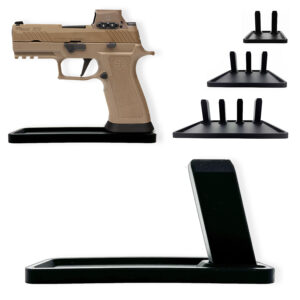

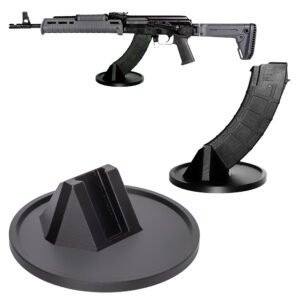

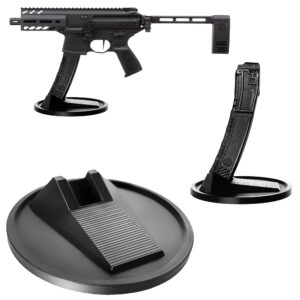
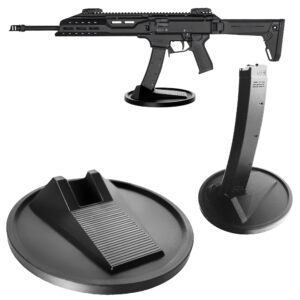

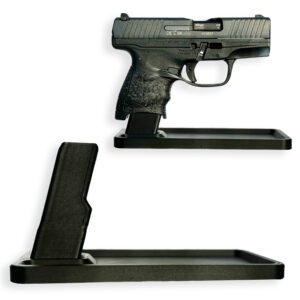
Colt
Colt M4 Carbine
Colt LE6920
Colt AR-15 A4
Daniel Defense
DDM4 V7
DDM4 V9
DDM4 V11
DDM4 ISR (Integrally Suppressed Rifle)
Smith & Wesson (S&W)
M&P15 Sport II
M&P15 Tactical
M&P15T
Bravo Company Manufacturing (BCM)
BCM Recce-16
BCM Recce-14
BCM MCMR Series
Aero Precision
M4E1 Series
AC-15
AR15 Pistol (Various Configurations)
Ruger
Ruger AR-556
Ruger SR-556
Ruger AR-556 MPR (Multi-Purpose Rifle)
Springfield Armory
Saint Victor
Saint Edge
Saint AR-15
PSA (Palmetto State Armory)
PSA PA-15
PSA AR-V
PSA Jakl (AR Pistol)
FN America
FN 15 Tactical Carbine
FN 15 Patrol
FN 15 DMR
Wilson Combat
Recon Tactical
Super Sniper
Protector Carbine
SIG Sauer
SIG M400 Tread
SIG M400 Elite
SIG M400 SDI
LWRC International
IC DI (Direct Impingement)
IC SPR
IC A5
Bushmaster Guns
XM-15 QRC
Bushmaster MOE
XM-15 Patrolman
Rock River Arms
LAR-15 Entry Tactical
LAR-15 Predator
LAR-15 Elite Comp
Stag Arms
Stag 15 Tactical
Stag 15L (Left-Handed Models)
Stag 15 Valkyrie
Noveske Rifleworks
Noveske Gen 4 N4
Noveske Space Invader (AR Pistol)
Noveske Recon
Anderson Manufacturing
AM-15 Optic Ready
AM-15 M4 Carbine
AM-15 Precision Rifle
Adams Arms
AA-15 Piston Rifle
P2 AARS (Adams Arms Rifle Series)
Black Rain Ordnance
SPEC15 Series
BRO Predator
Fallout 15
Diamondback Guns
DB15 Series
DB15CCMLB
DB15EB
Del-Ton Inc.
DTI-15
Del-Ton Echo 316H
Sierra 316M
Windham Weaponry
Windham SRC
Windham VEX-SS
Windham RMCS-4 (Caliber Conversion System)
Christensen Arms
CA-15 G2
CA-15 Recon
CA-15 Titanium Edition
Patriot Ordnance Factory (POF-USA)
Renegade Plus
P415 Edge
Revolution DI
LaRue Tactical
PredatAR
OBR (Optimized Battle Rifle)
LaRue Stealth 2.0
Battle Arms Development
Workhorse Patrol Carbine
BAD556-LW (Lightweight)
Authority Elite Rifle
Faxon Guns
Ascent AR-15
FX-19 (AR Pistol)
Streamline Ultralight Series
KE Arms
KE-15 SLT (Super Lightweight Tactical)
KE-15 Scout Carbine
Primary Weapons Systems (PWS)
MK1 MOD 2-M
MK116 PRO
MK107 (Piston AR Pistol)
ZEV Technologies
ZEV Core Elite Rifle
ZEV AR15 Billet Rifles
Franklin Armory
BFSIII AR-C1
Militia Model
F17-L (Chambered in .17 WSM)
Seekins Precision
SP15 DMR
NX15 Skeletonized Rifle
Havak Bravo
Aero Precision (Additional Models)
EPC-9 (Pistol Caliber ARs)
VG6 AR Rifles
Barrett Guns
REC7 DI
REC7 Gen II
CMMG
MK4 RCE
Resolute 300
Banshee (AR Pistol)
DPMS Panther Arms
Panther Oracle
Panther LR-308
H&K (Heckler & Koch)
HK MR556A1
HK416 (Military Variant)
Rock Island Armory (Armscor)
VR-80 Tactical AR (Shotgun AR Platform)
Troy Industries
Troy SPC-A3
Troy PAR (Pump Action AR)
Wilson Tactical
Tactical Recon AR
Protector Series
F1 Guns
FDR-15 Skeletonized Rifle
BDRx-15 Series
Juggernaut Tactical
JT-15
JT-10 Precision Rifle
AeroSurplus
Surplus AR-15 Rifles (Budget Models)
Thunder Tactical
AR-15 Basic Carbine
Tactical Builder Sets
Radical Guns
RF-15
Forged AR-Series
Dark Storm Industries
DS-15 Featureless Rifles
DS-10 Typhoon
DRD Tactical
Paratus
Aptus AR Rifles
Bear Creek Arsenal
BCA-15
AR Complete Upper Builds
Aero Survival Rifles (ASI)
ASR Tactical Series
Tactical Edge
WARFIGHTER Series
AR-15 Lightweight Rifles
Lone Star Armory
TX15 DMR
TX15 Carbine
HERA Arms
HERA H7
HERA AR-15 Lower Builds
IWI (Israeli Weapon Industries)
Zion-15
DRD Tactical
Tactical Modular Rifles
Quick-Takedown Rifles
V Seven Weapons
1776 Rifle
Hyperlite Rifle
Core Rifle Systems
Core15 Tac III
Core15 Patrol Rifle
Armalite (Original AR-15 Creator)
M15 Tactical
M15 A4 Carbine
DEF15 (Defensive Sporting Rifle Series)
PSA (Palmetto State Armory Additional Models)
PSAK-47 Hybrid (AR-AK Style Hybrid)
PSA Dagger (Pistol Caliber Configurations)
Odin Works
OTR-15
Odin Recon Rifle
Maxim Defense
MDX-508 PDX (Compact AR Pistol)
MDX-510 Rifle